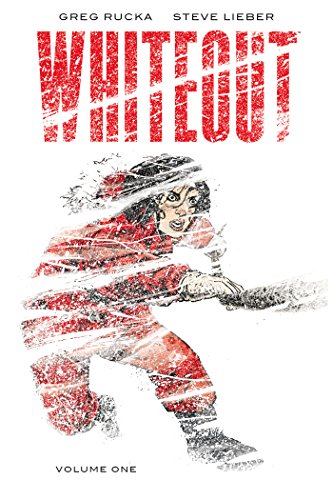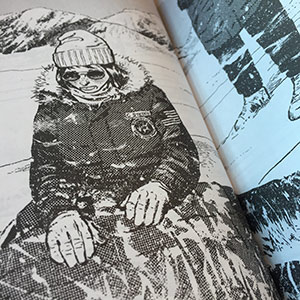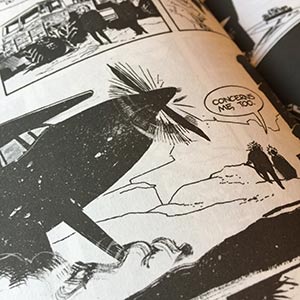Inspiration: Whiteout
 Inspiration tends to be nonlinear – at least for me. While reading rulebooks, modules, and actual play accounts often gives me interesting new ideas and ways of thinking about the games I’m playing, it’s often non-gaming media that provide the most powerful inspiration.
Inspiration tends to be nonlinear – at least for me. While reading rulebooks, modules, and actual play accounts often gives me interesting new ideas and ways of thinking about the games I’m playing, it’s often non-gaming media that provide the most powerful inspiration.
Perhaps because they are coming from outside the world of tabletop roleplaying, they give me another angle, another way of looking at what I do as player and as gamemaster.
The graphic novel Whiteout, penned by Greg Rucka and illustrated by Steve Lieber, is a perfect example of this.
Whiteout follows U.S. Marshal Carrie Stetko as she attempts to unravel a mystery at the bottom of the world. The blinding white of ice and snow dominates the Antarctic setting, and Lieber renders it in surprisingly varied black and white. It’s a tightly told story with well-defined characters and art that makes your bones cold.
I re-read Whiteout every once in a while, and not just because it’s a good read. Every time I read it, I glean something new from it that inspires me as a roleplayer. Here are a few:
The Key to Engaging Characters is Execution
 Carrie Stetko doesn’t have superpowers. She doesn’t have magic. She’s compelling because she’s a whole person.
Carrie Stetko doesn’t have superpowers. She doesn’t have magic. She’s compelling because she’s a whole person.
Her backstory is interesting, but not astoundingly novel. It’s the kind of backstory you’d expect in a detective story. But the magic is in how the backstory is revealed.
Rucka lets the reader discover bits and pieces of it, and never divulges all of it. We get just enough, but not too much. Even when the story is finished, we want to discover more about Marshall Stetko.
This slow exposing of the character reminds me as a player that while it’s important to build a backstory, it’s equally important not to expose it all at once. Let the flow of the game dictate when and to whom I reveal that backstory.
As a GM I’m reminded that villains can be nuanced, containing both bad intentions and good characteristics.
Setting Should Permeate the Story
 The Antarctic is nasty. It’s deadly on a good day. And Whiteout makes this abundantly clear. The point is reinforced on every page.
The Antarctic is nasty. It’s deadly on a good day. And Whiteout makes this abundantly clear. The point is reinforced on every page.
There’s the cold, of course. But there’s wind that can knock you off your feet. Whiteouts that make you instantly lost. Metal that gets so cold it can tear flesh.
The weather can make radio communication difficult. It can keep you stuck in one place. Being stuck in small enclosures with the same people for months on end can make people do crazy things.
The setting affects every aspect of the story. Every time I read Whiteout I marvel at this, and think about how to make setting that important when running games. What elements of setting am I missing because I simply haven’t gone past tropes? How can I dig deeper and make it permeate the story?
On more than one occasion I’ve had to grab pencil and paper while reading Whiteout, because I’ve been struck by a sudden revelation about setting that affects a campaign I’m running.
Action Drives Story
Whiteout’s plot is straightforward. It doesn’t try terribly hard to trick you. But the simple story moves swiftly. That taut storytelling style is core to the comic narrative form, but here it’s put in service to a gritty, very realistic story.
That combination of tight narration and realism is hard to pull off. Rucka does it by putting the villains in motion, which reminds me of Apocalypse World Fronts and the value of the countdown clock. A game will never get too slow with a well-implemented countdown clock in place.
Getting Whiteout
There’s much more I could say about Whiteout, but I don’t want to spoil the fun. You can grab Whiteout and its equally brilliant successor, Whiteout: Melt, from your local bookstore, comic book store, or the usual online sources.
Ω